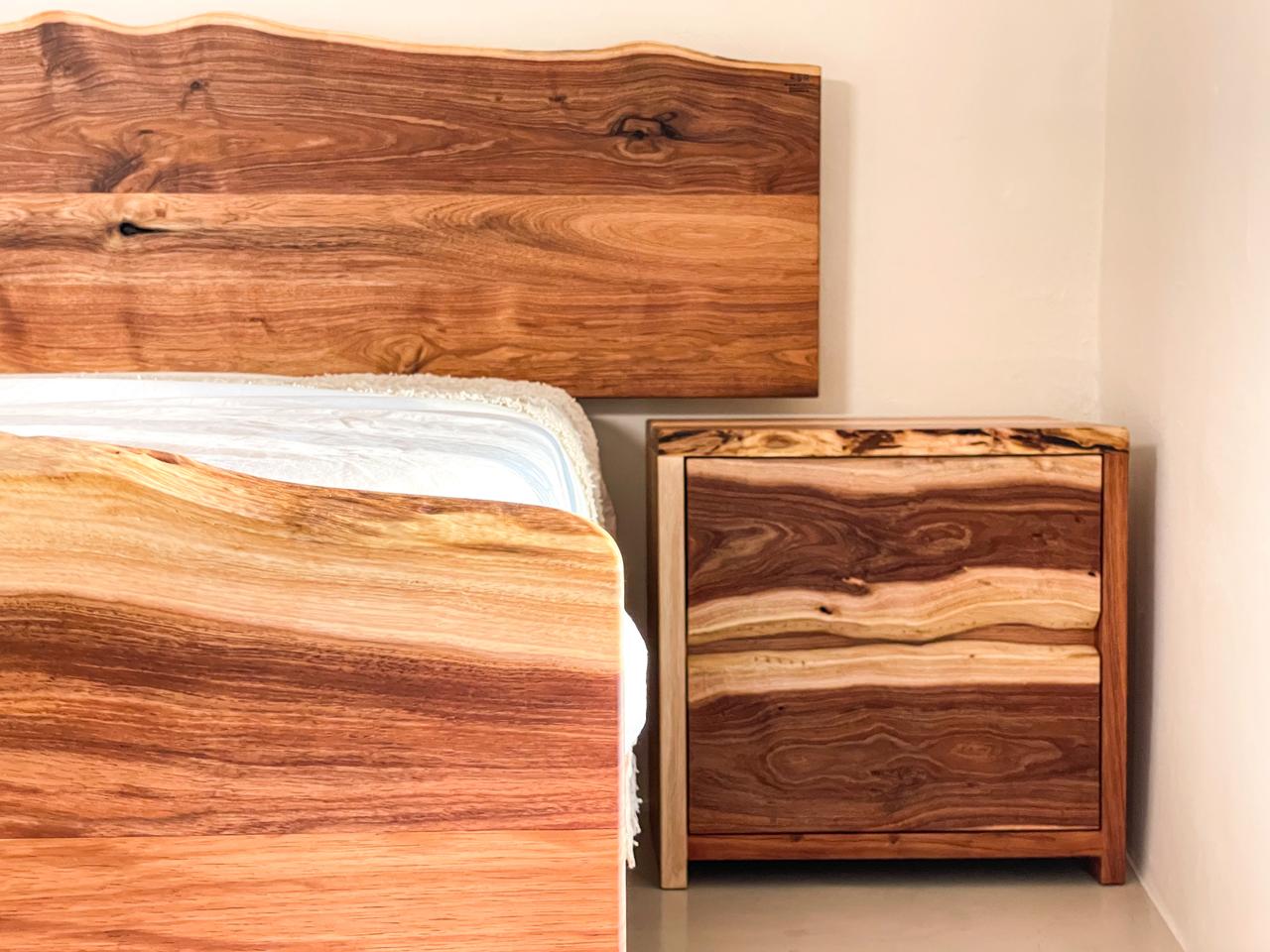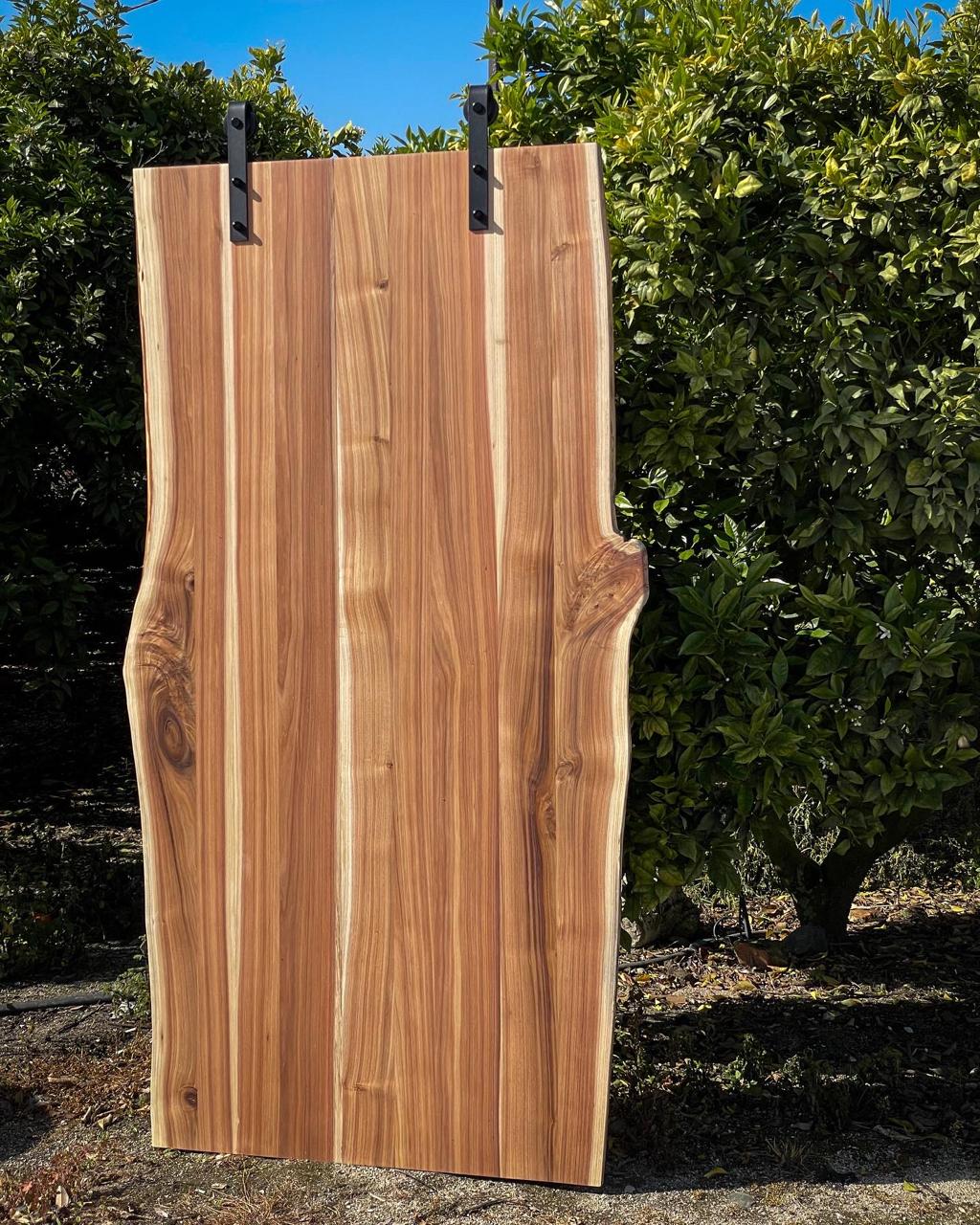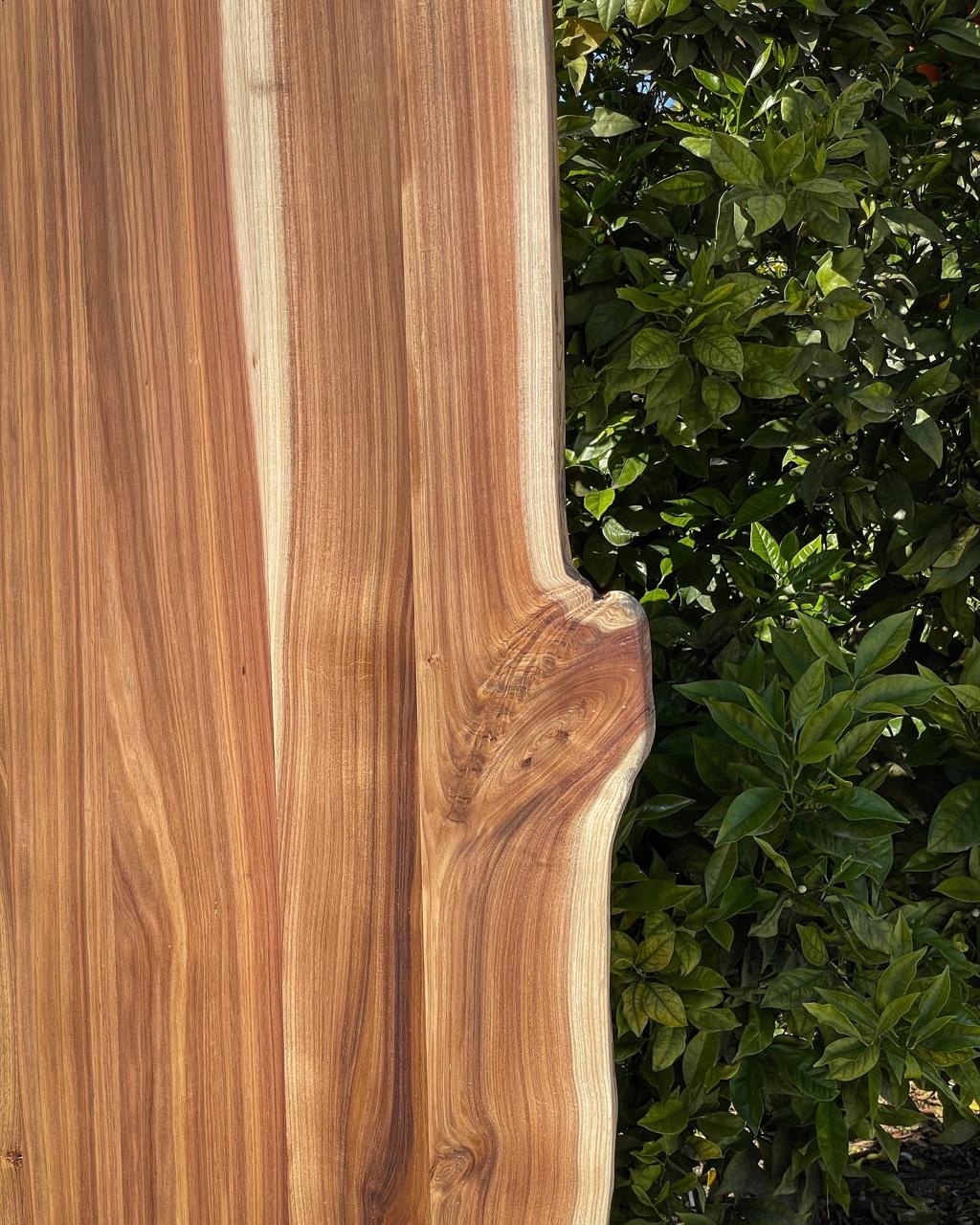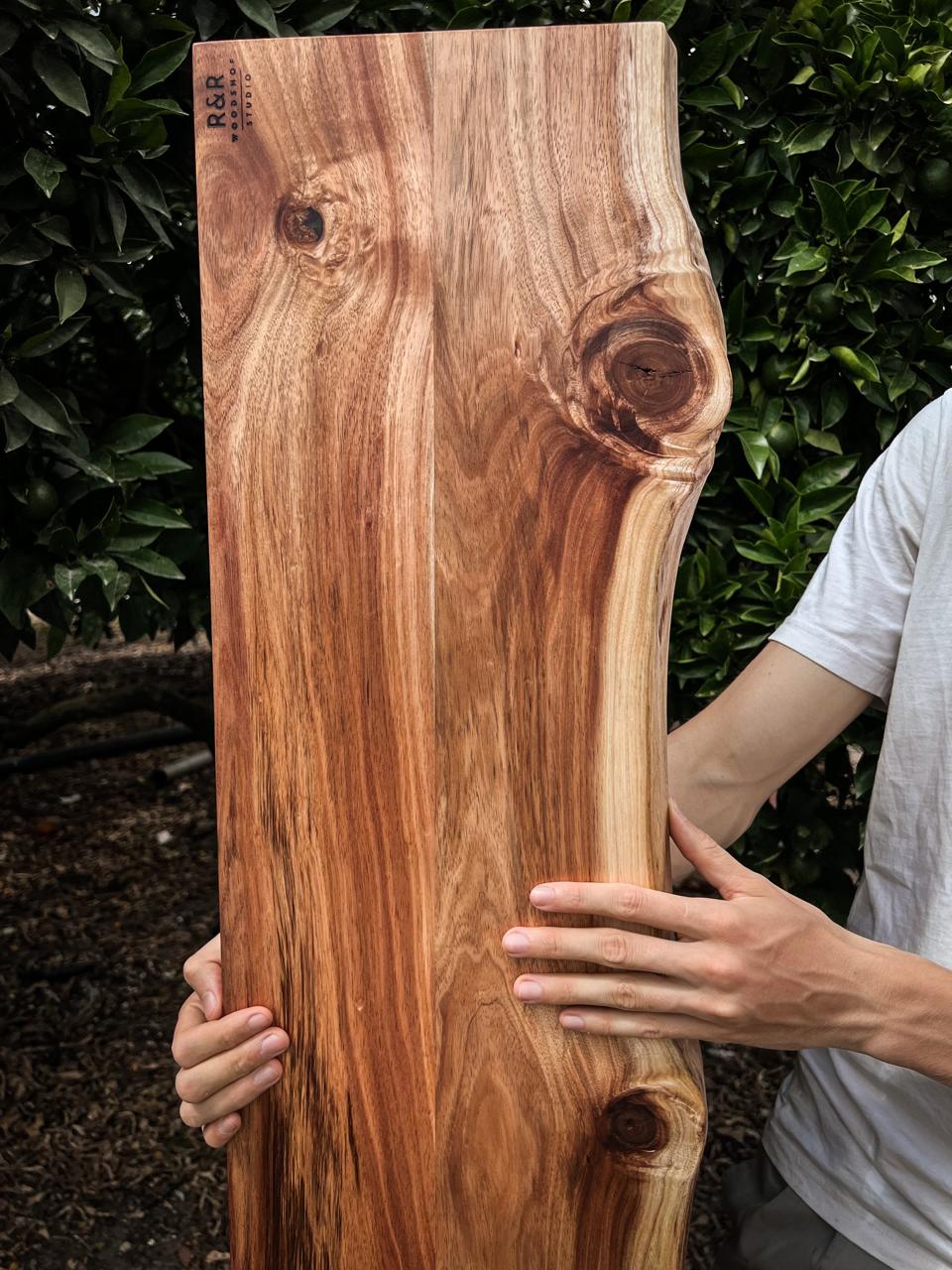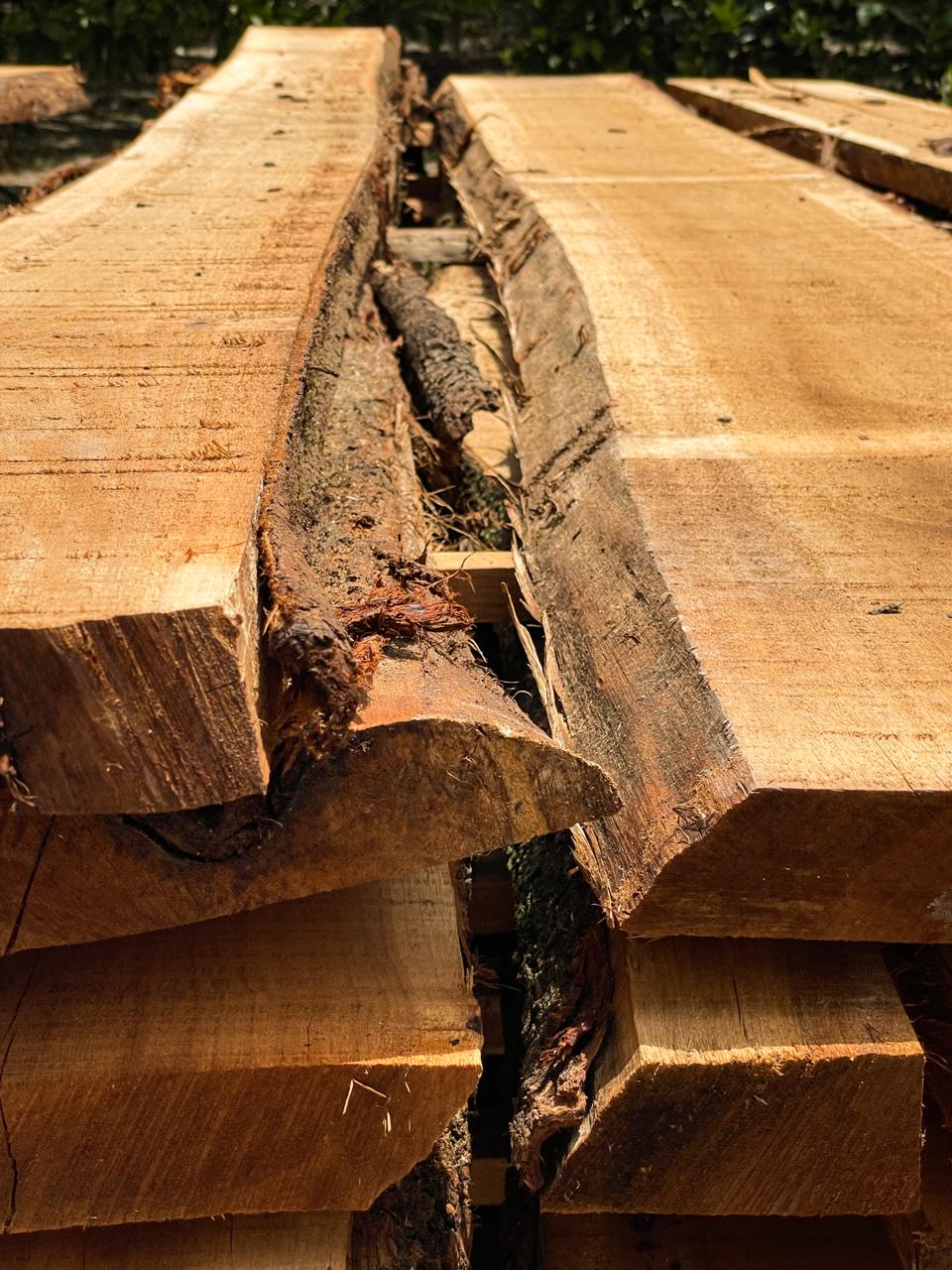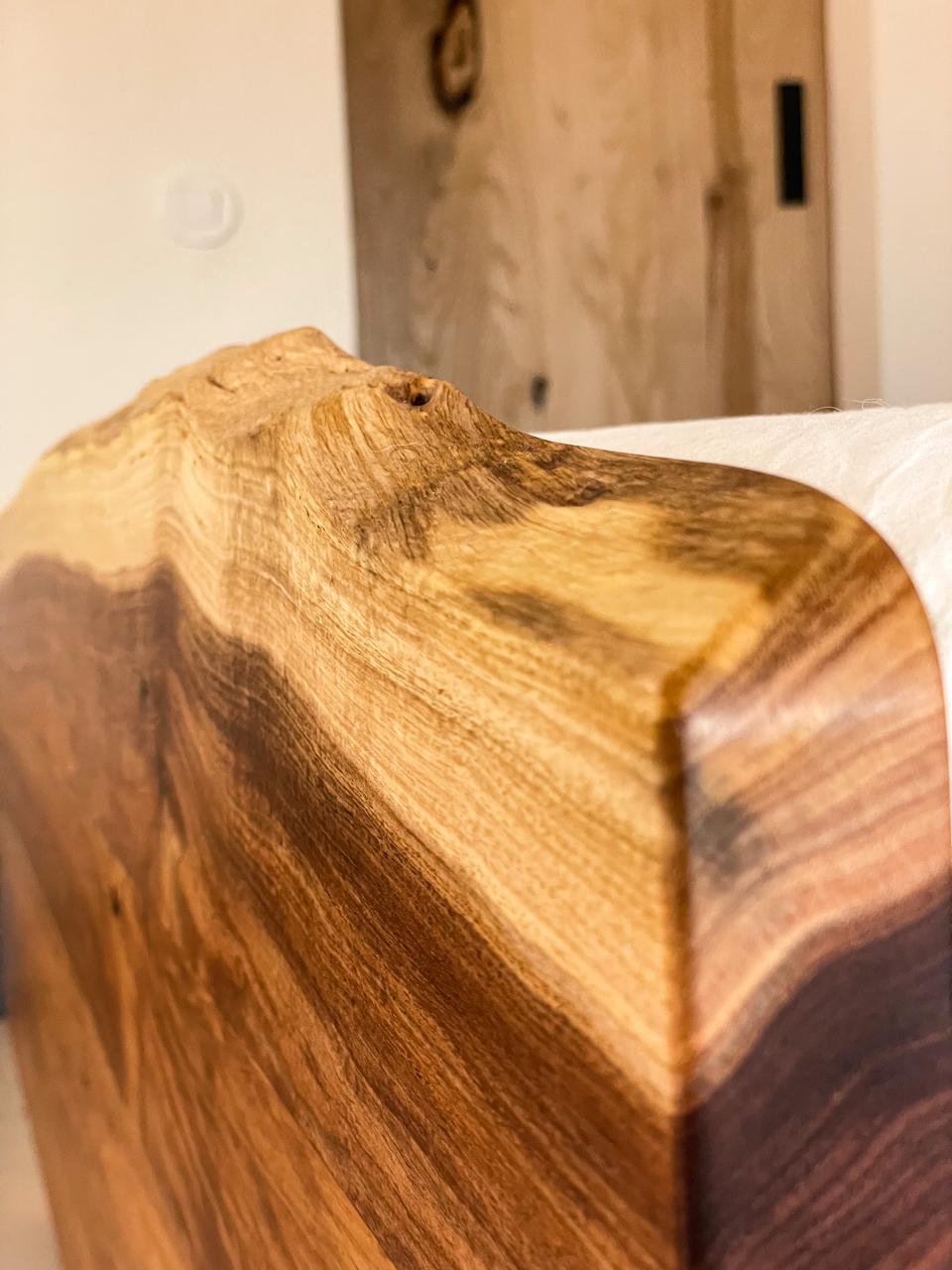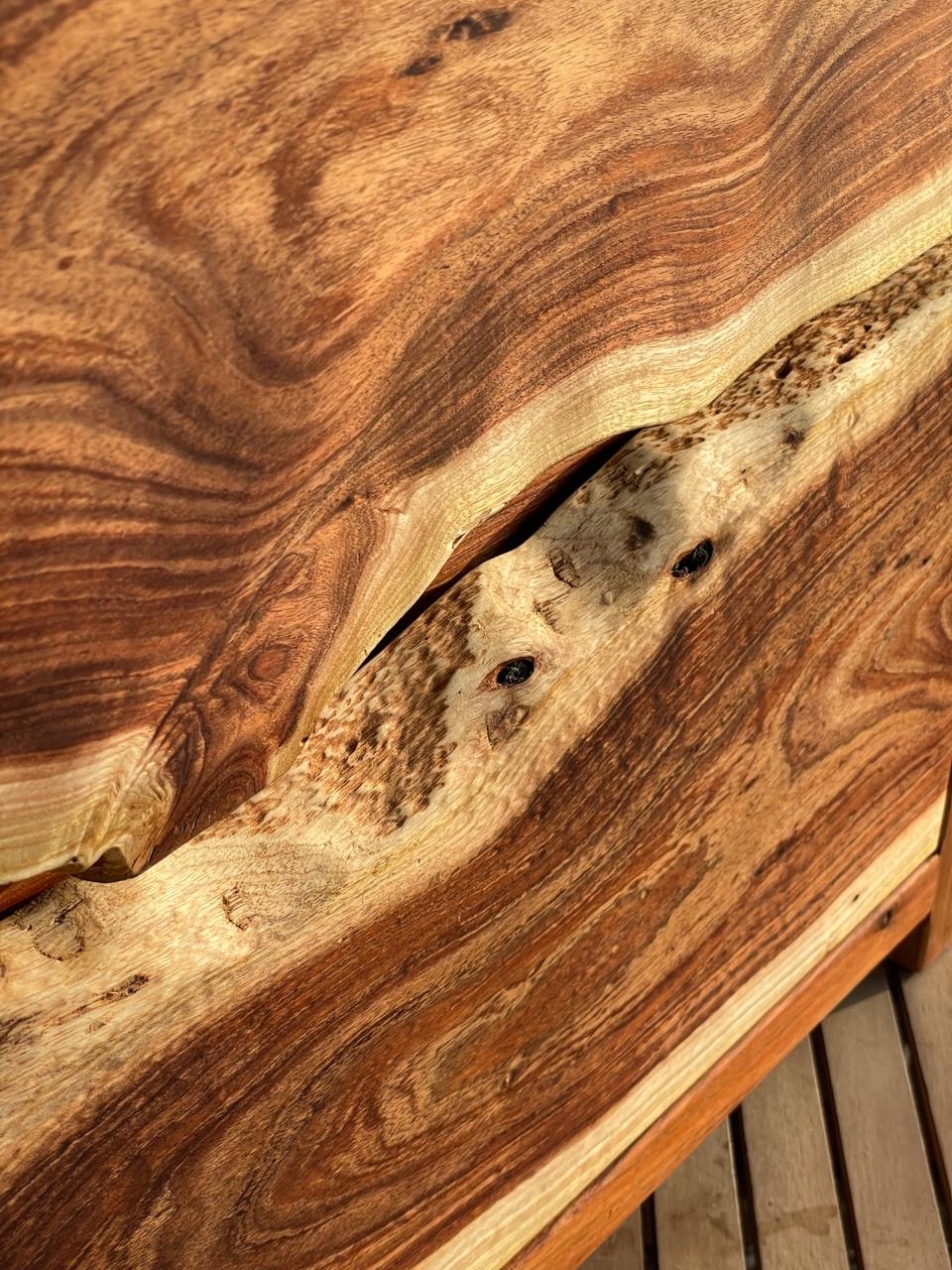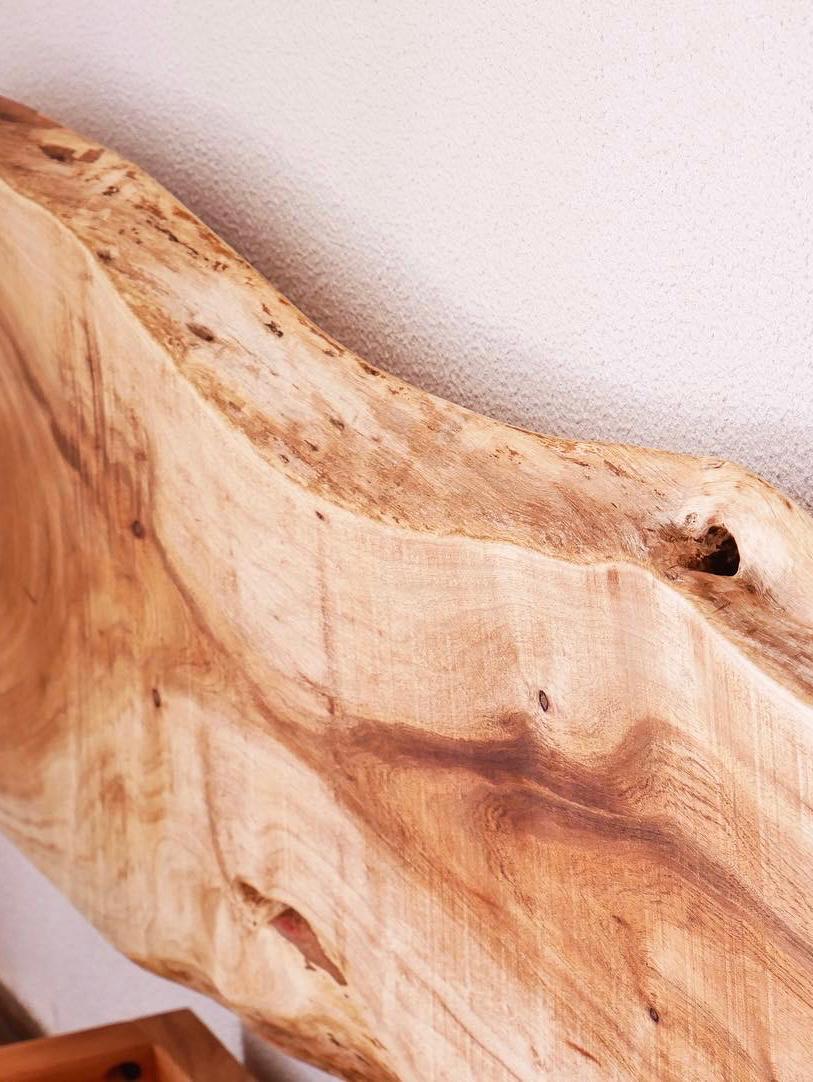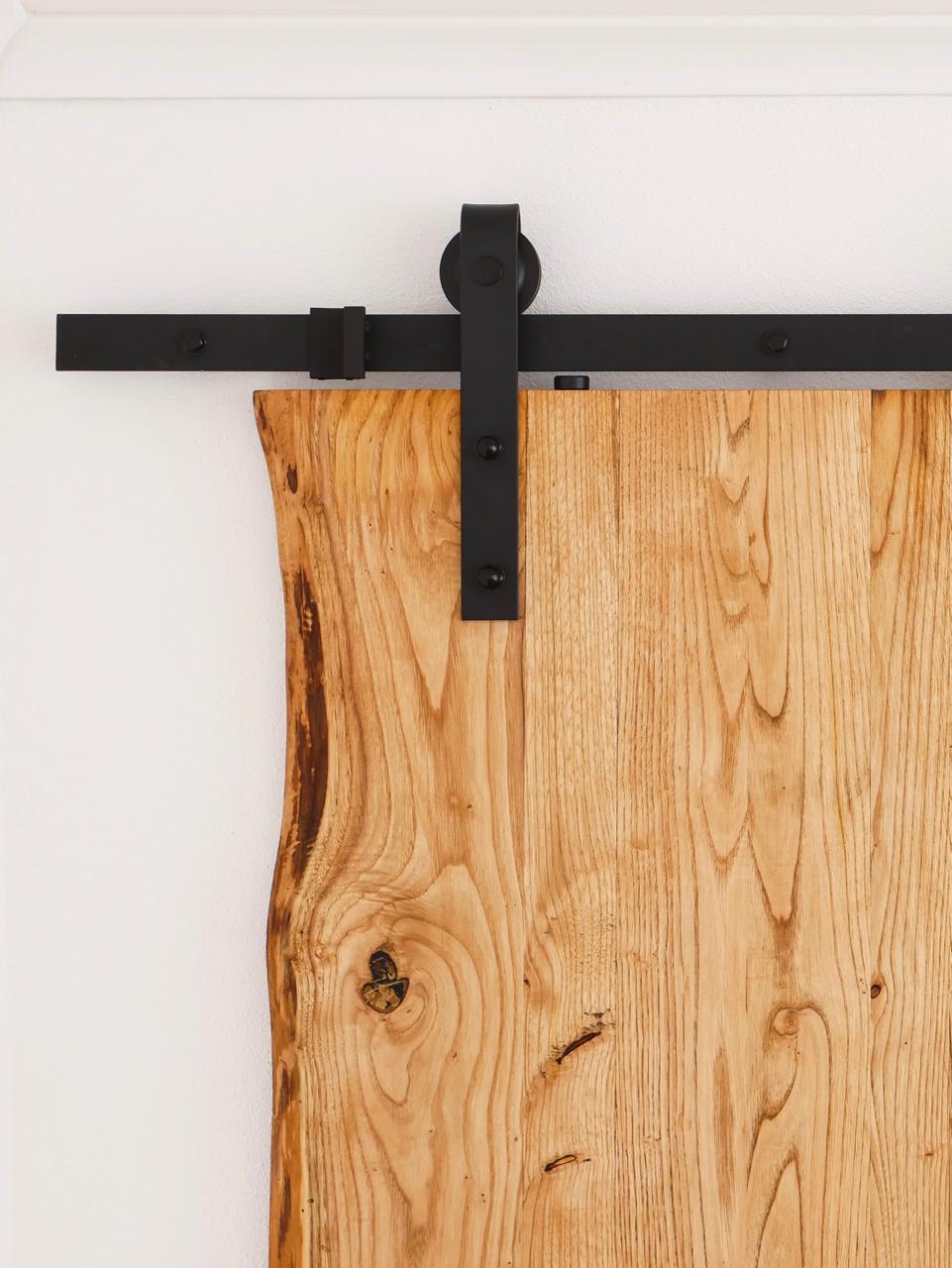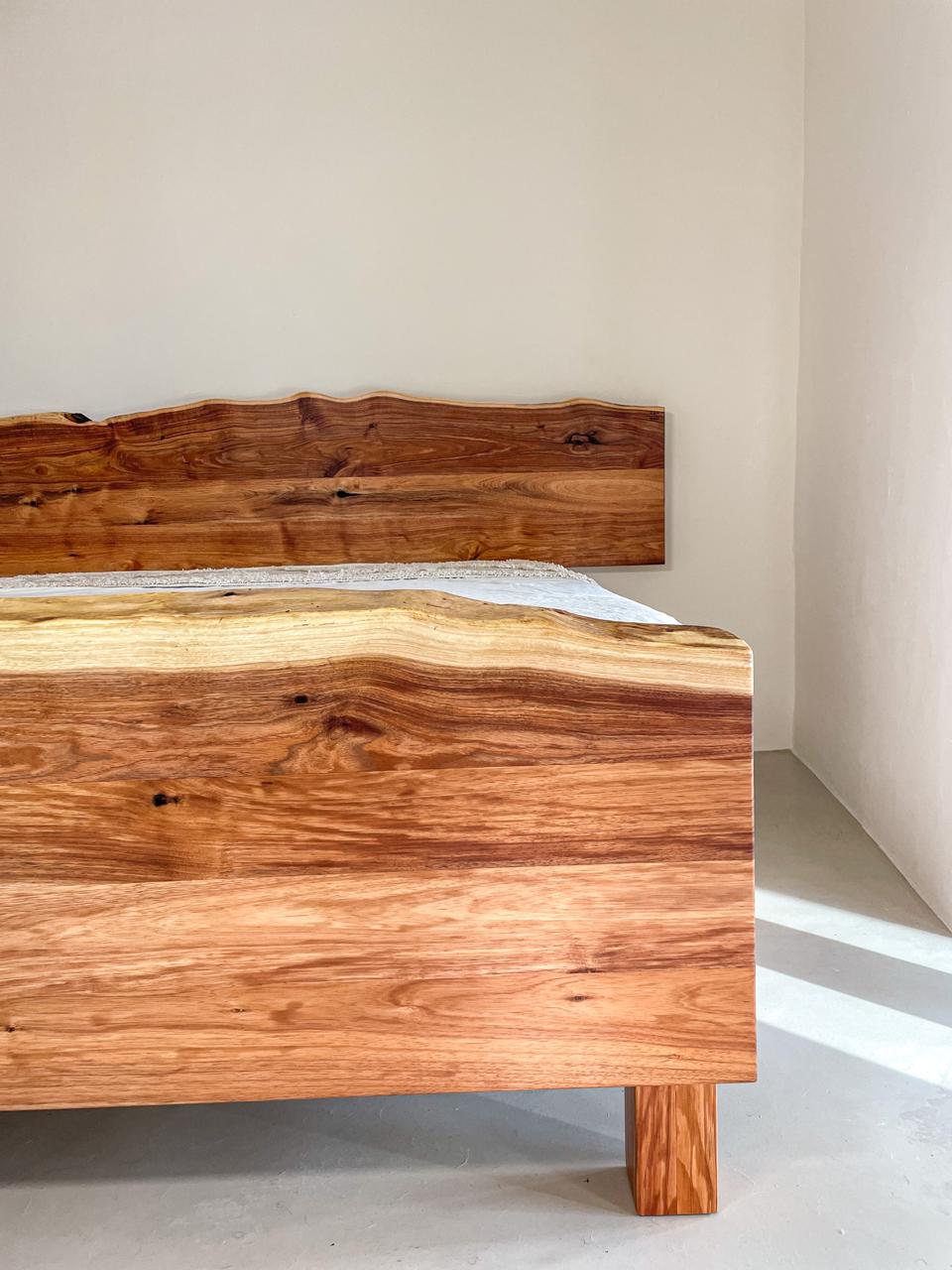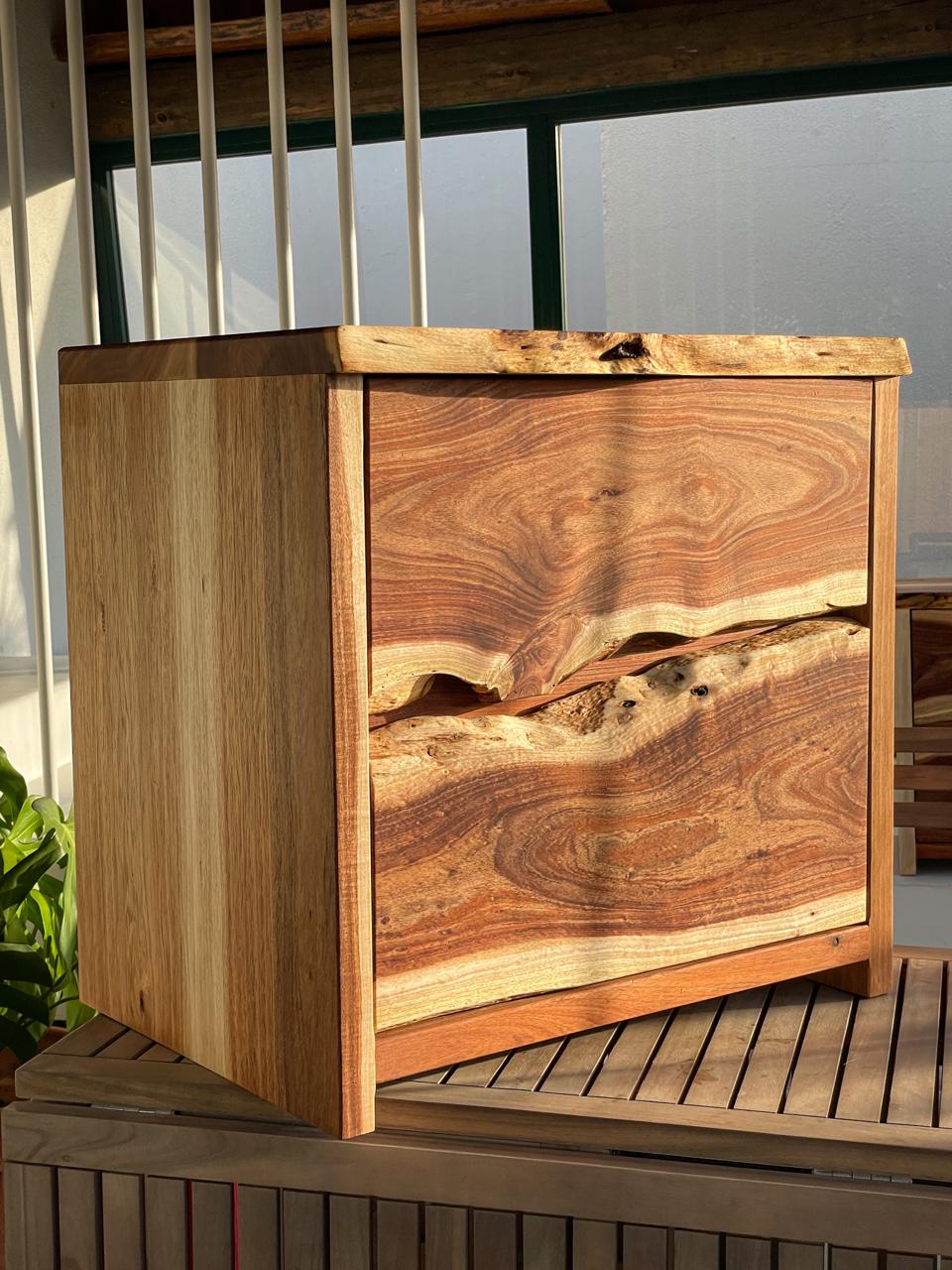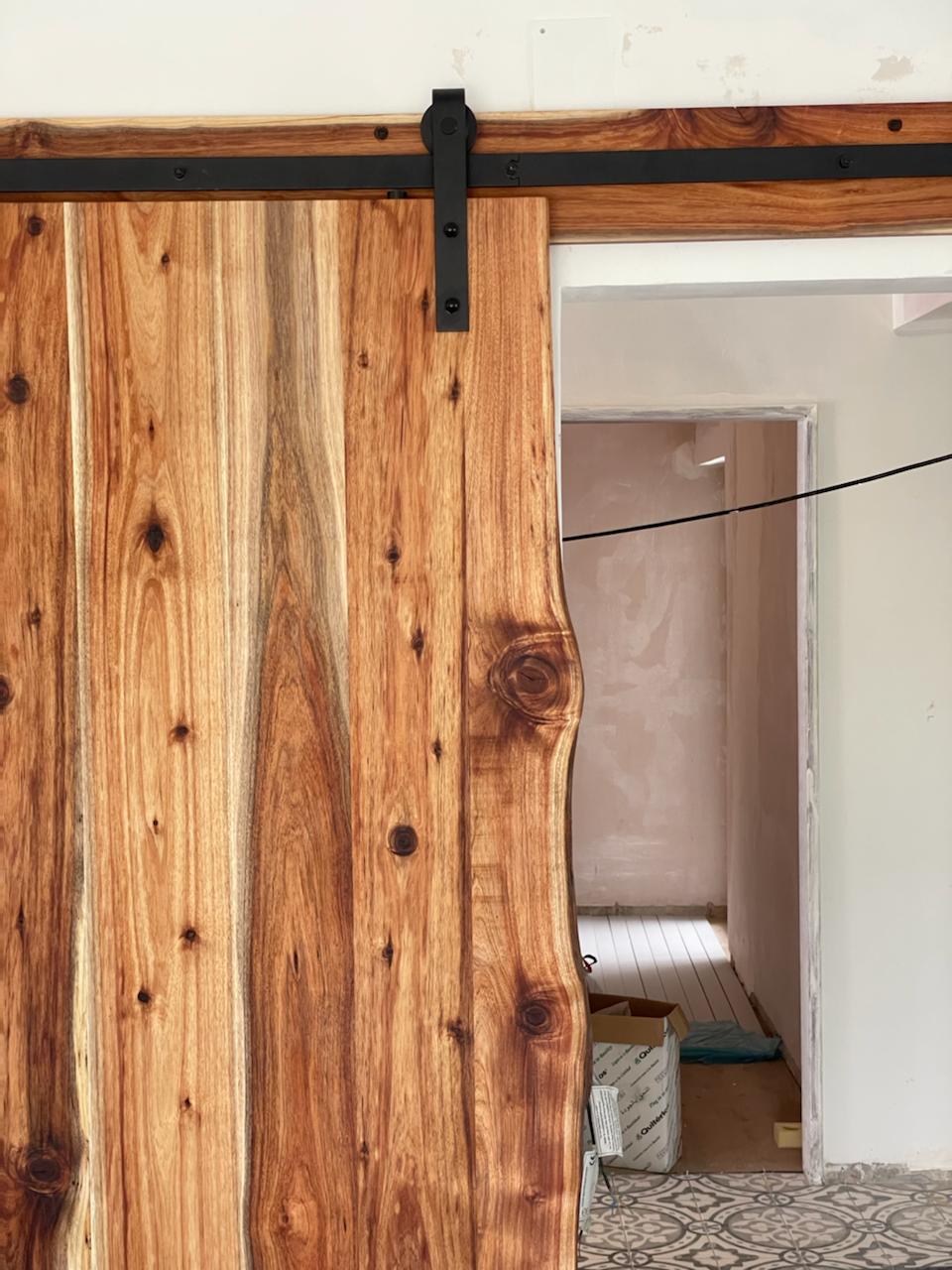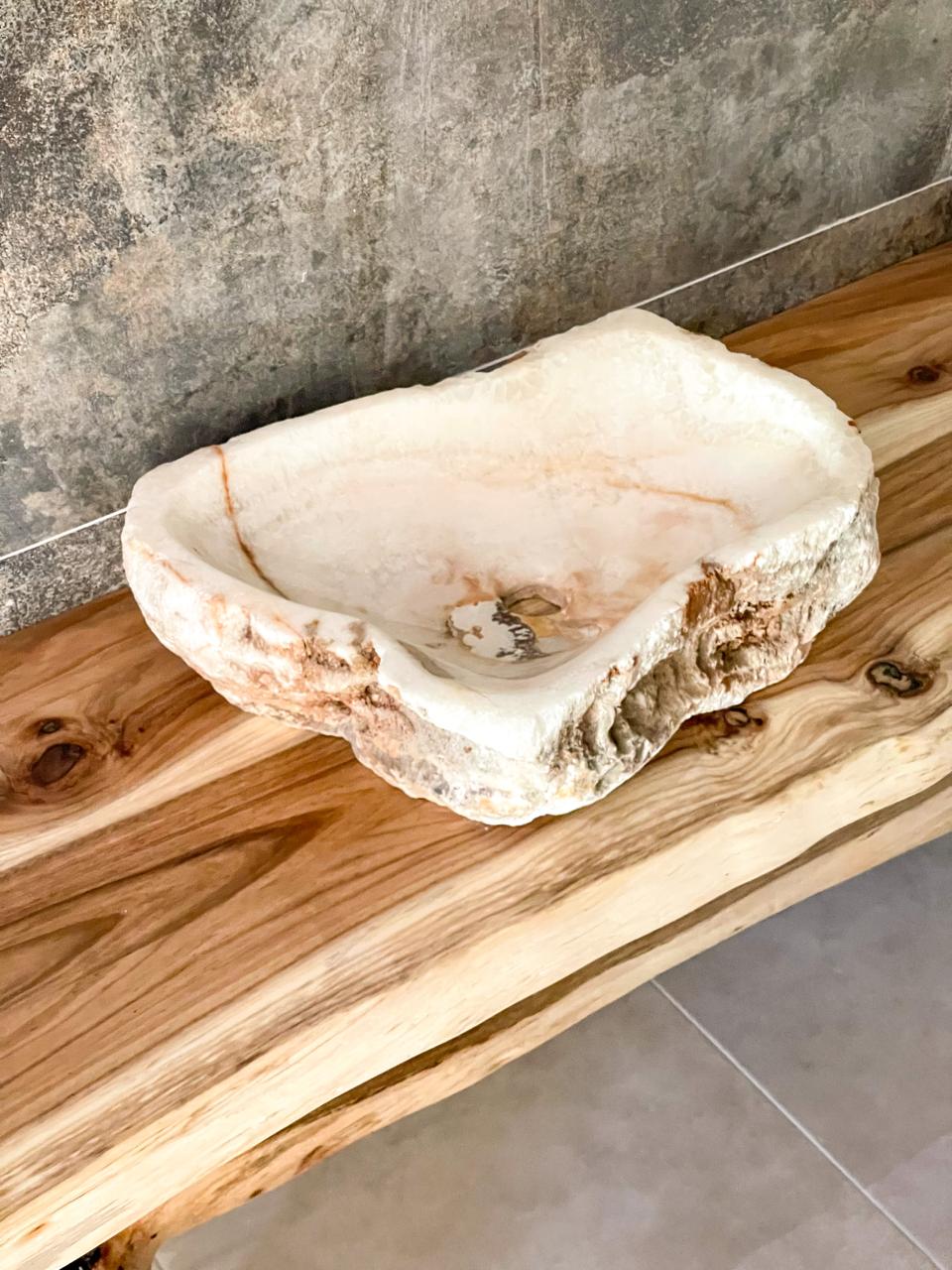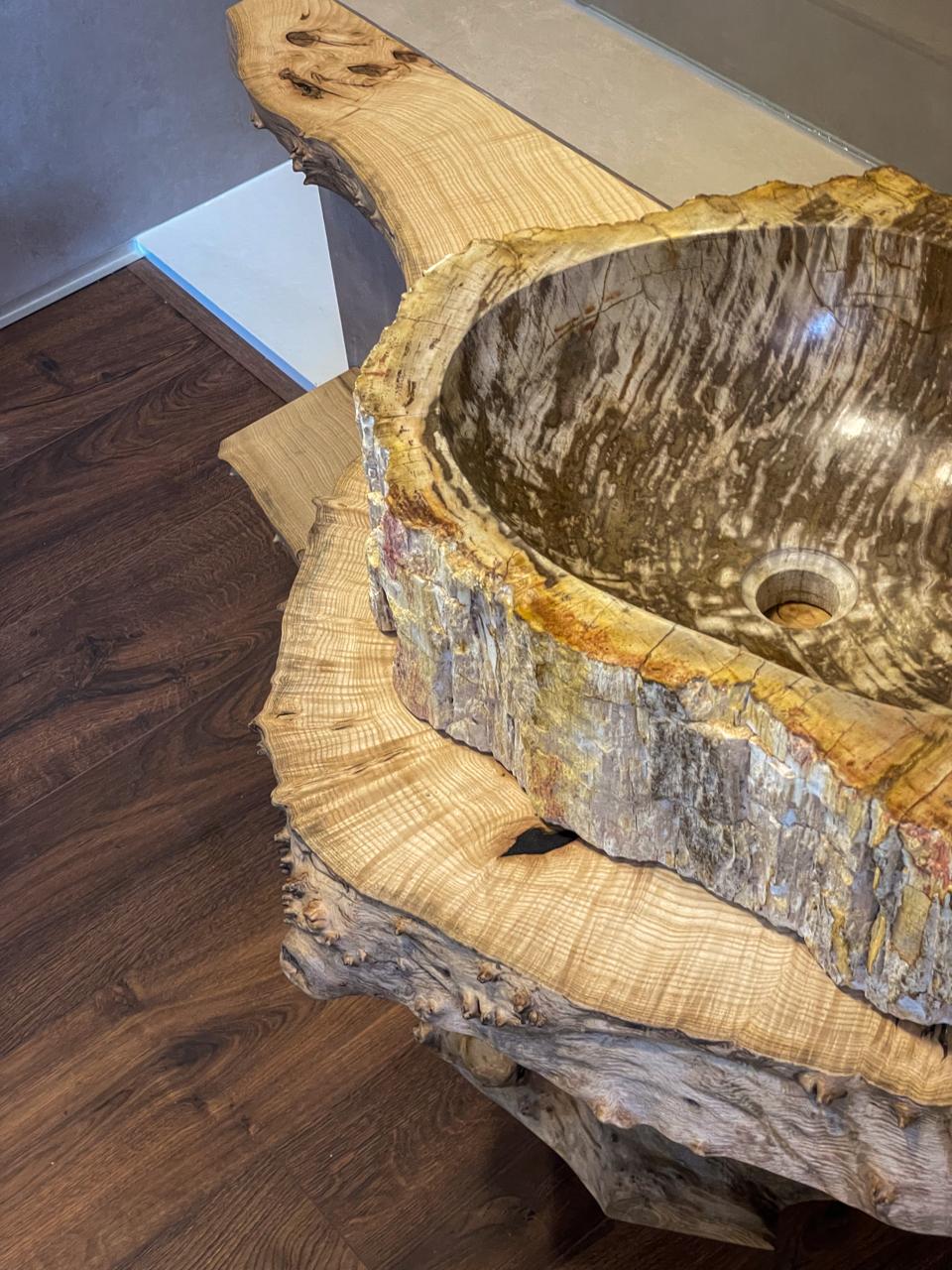Edge as Signature
How to Choose the Perfect Live Edge That Defines the Character of Your Piece?
A live edge is the natural line of the wood, preserving the original shape of the tree trunk. Each edge is unique, like a fingerprint. It’s impossible to replicate a live edge. That’s why it’s important to decide in advance what kind of character you want your piece to have — bold or quiet
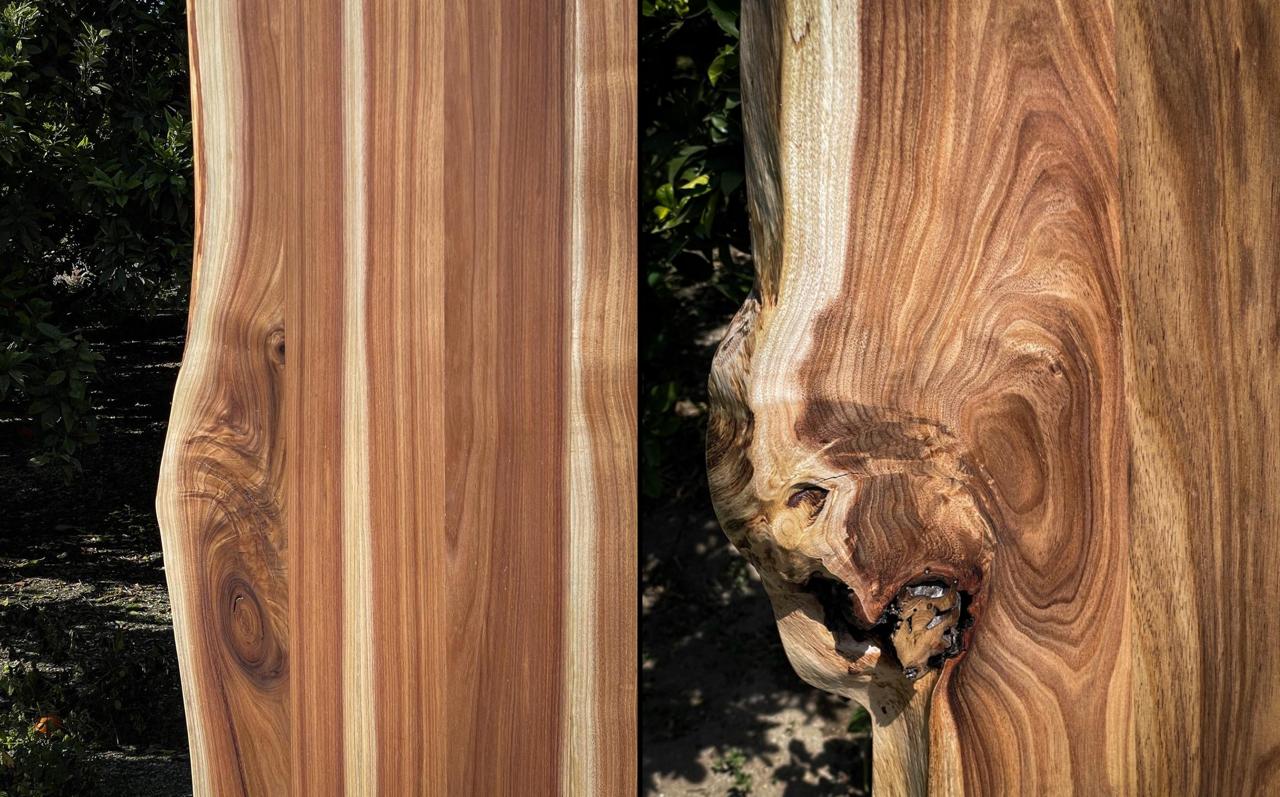
Some live edges are dramatic: full of sweeping curves, waves, and asymmetry that bring energy and movement to a piece. Others are subtle almost straight, with just a gentle variation that adds softness without commanding attention. Natural imperfections — knots, cracks, bark inclusions add authenticity and soul. For some, they’re the most beautiful
part of the piece. For others, they may feel too raw or rustic. There’s no wrong preference.

Acacia, for example, reveals a signature detail along its live edge: a pale, creamy band near the sapwood that softly contrasts the darker heartwood. This natural transition creates a striking, two-tone effect ideal for those who appreciate depth and organic movement in their furniture.
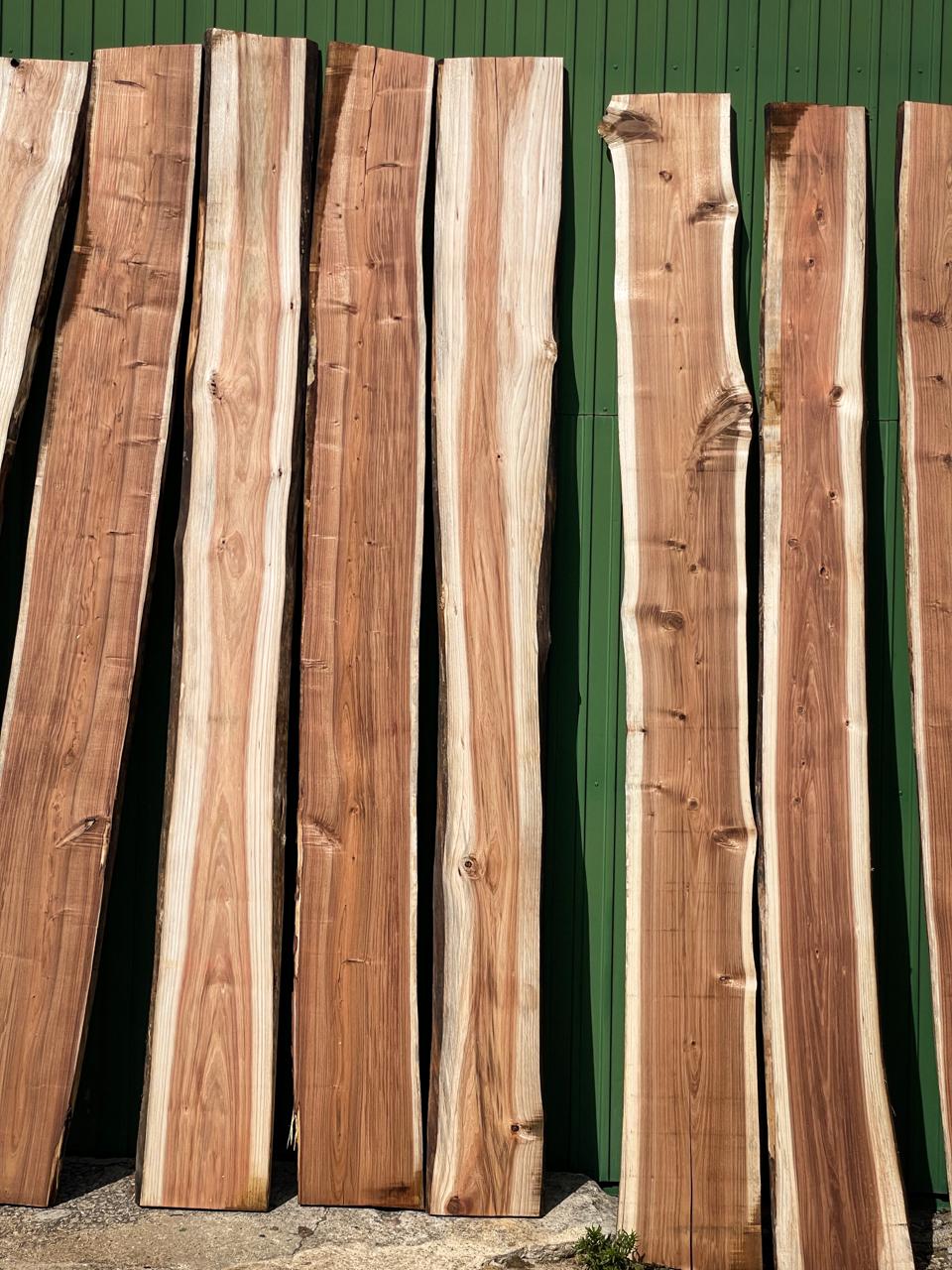
Chestnut and ash, on the other hand, offer a more uniform appearance — warm, balanced tones that remain consistent from center to edge. Their calm elegance speaks to those who prefer subtlety and timeless simplicity.
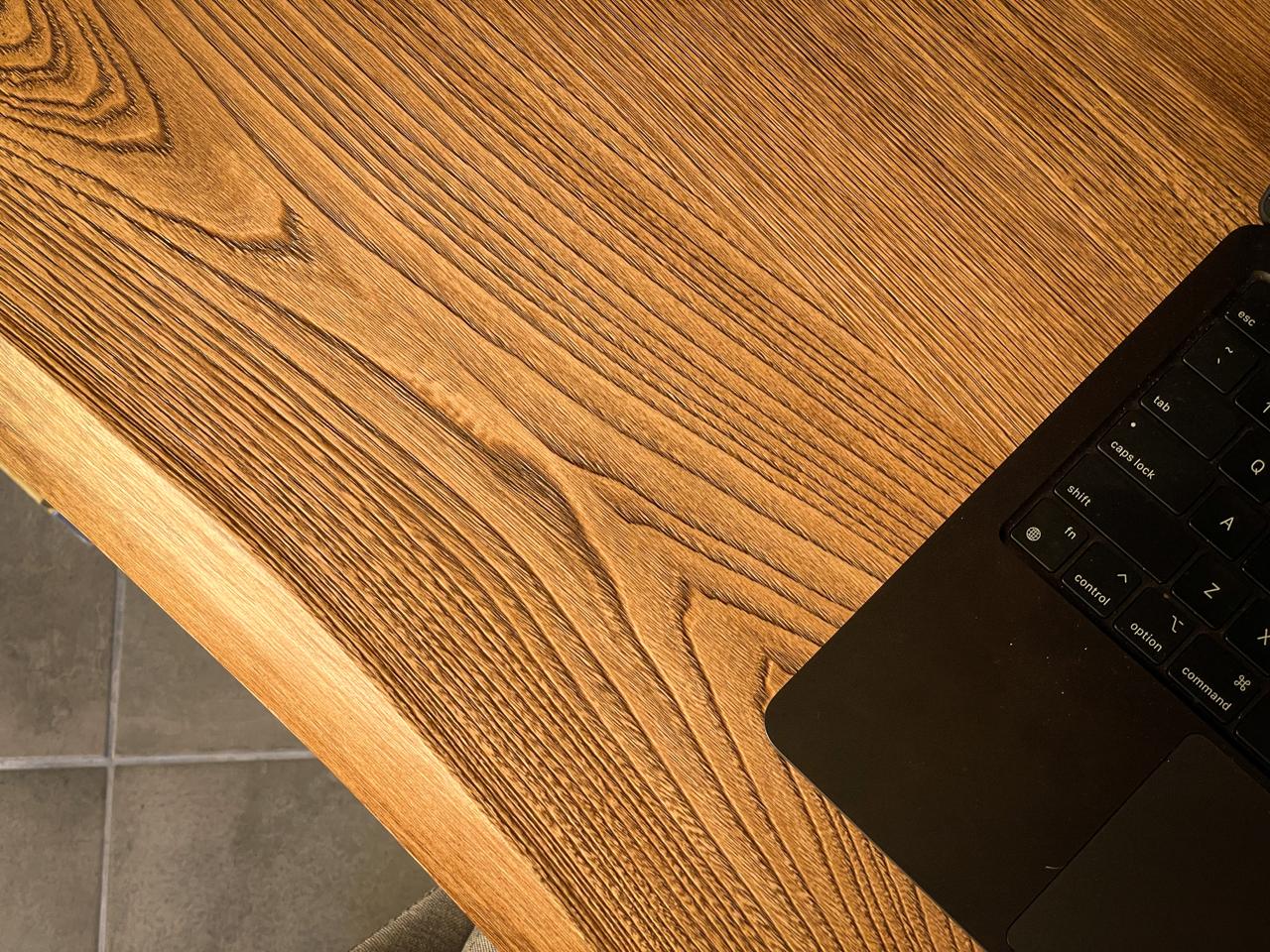
These differences aren’t flaws — they’re part of what makes solid wood so rich and expressive. But they do matter when it comes to design decisions. That’s why we factor them in carefully when selecting boards for your project. We know how each species behaves, how it ages, how it responds to finishes, and how its edge will interact with the rest of the piece.

Our job isn’t just to work with wood — it’s to understand it deeply and help you make informed choices that bring out its best. Whether you’re looking for strong contrast or smooth continuity, we’ll guide you toward the right material for your vision.
